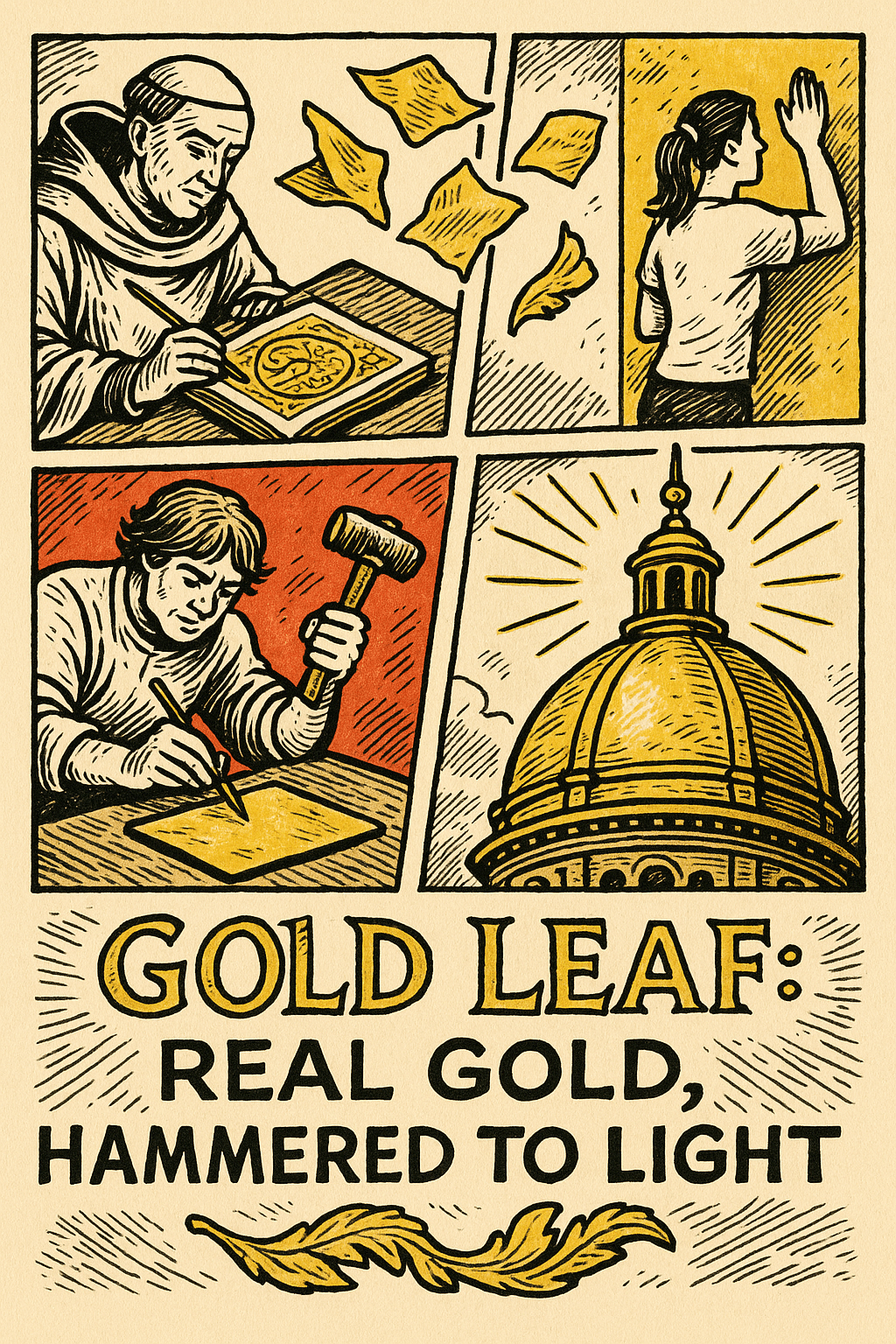What Is Gold Leaf in Art?
Gold leaf has enchanted artists, craftsmen, and spiritual architects for millennia. From the gilded domes of Byzantine churches to the delicate embellishments on Japanese screens, gold leaf remains one of the most luminous and luxurious materials in art. But what exactly is gold leaf? How is it made, and why does it still captivate creators today?
A Definition: What Is Gold Leaf?
Gold leaf is real gold that has been hammered into extremely thin sheets, often just a few microns thick—so thin that light can pass through it. Despite its fragile appearance, it is genuine gold, usually between 22 and 24 karats, though imitation versions using brass or other alloys also exist.
Gold leaf is prized for its reflectivity, resistance to tarnish, and aesthetic opulence. It is applied to surfaces through a process called gilding.
A Brief History of Gold Leaf in Art
Gold leaf has a long and symbolic history. In ancient Egypt, it adorned tombs and sarcophagi. The Byzantine Empire used it extensively in religious iconography. In Europe during the Middle Ages, it became essential in illuminated manuscripts and altar panels.
In Eastern traditions, such as in Japanese and Chinese lacquer work, gold leaf added both symbolic richness and material value. It played a prominent role in Buddhist art, often symbolizing the divine or sacred.
How Is Gold Leaf Made?
The traditional process is as much craft as it is science. Here’s a simplified breakdown:
- Alloying – Gold is mixed with small amounts of silver or copper (if desired).
- Casting – The gold is melted and cast into small bars or ribbons.
- Rolling – It is rolled out into thin strips.
- Beating – Using a series of increasingly finer hammers, the gold is beaten in stages between layers of vellum or Mylar until it reaches its final thinness.
- Cutting – The gold leaf is cut into standardized sizes (usually 3″ x 3″) and placed into protective books.
Traditional goldbeating is still practiced in places like Germany, Italy, and Thailand.
How Artists Use Gold Leaf
Gold leaf can be applied to:
- Canvas paintings
- Wood panels and sculptures
- Glass (reverse gilding)
- Stone and architectural details
- Manuscripts and prints
- Furniture and décor
The process of applying it involves adhesives, most commonly oil size or water-based size depending on the surface and type of work. Once laid down, the leaf is gently pressed and burnished.
Contemporary artists now combine gold leaf with acrylics, mixed media, and even street art, using it to create powerful contrast, opulence, or spiritual resonance.
Types of Gold Leaf
- Genuine Gold Leaf – Usually 22k–24k, long-lasting, does not tarnish.
- Imitation Gold Leaf – Made from brass or composite metals; cheaper, but will tarnish unless sealed.
- Patent Leaf – Mounted on tissue paper for easier handling.
- Loose Leaf – Traditional free-floating sheets for skilled application.
Symbolism and Impact
Gold leaf is more than a decorative flourish—it carries symbolic weight. It can represent:
- Divinity or eternity
- Purity and illumination
- Power, prestige, or transcendence
In art, its use often signals something sacred, noble, or immortal. It captures and reflects light in a way that draws the eye and evokes wonder.
Key Takeaways
- Gold leaf is ultra-thin hammered gold used in art for visual and symbolic brilliance.
- It has a history stretching back over 5,000 years.
- Used in everything from religious icons to modern mixed media.
- Available in genuine and imitation forms.
- Still made by traditional goldbeaters worldwide.
Sources
- https://seppleaf.com
- https://en.wikipedia.org/wiki/Gold_leaf
- https://www.metal-leaf.com/blogs/news/what-is-gold-leaf
- https://www.johnnealbooks.com/product/what-is-gold-leaf
- https://www.gildedplanet.com/about_gold_leaf.html
